-
1. Maths
- 0. Maths
- 1. Construct a Square Root Spiral
- 2. Represent Some Irrational Numbers On the Number Line
- 3. Verify the Algebraic Identity (a+b)² = a² + 2ab+b²
- 4. Verify the Algebraic Identity (a-b)² = a²- 2ab+b²
- 5. Verify the Algebraic Identity a² – b² = (a+b) (a-b)
- 6. Verify the Algebraic Identity(a+b+c)² = a²+b²+c²+2ab+2bc+2ca
- 7. Verify the Algebraic Identity (a+b)³ = a³+b³+ 3a²b + 3ab²
- 8. Verify the Algebraic Identity (a – b)³ = a³ – b³ – 3ab (a – b)
- 9. Verify the Algebraic Identity a³+b³ = (a+b) (a²-ab+b²)
- 10. Verify the Algebraic Identity a³-b³ = (a-b) (a²+ab+b²)
- 11. Verify that If Two Lines Intersect Each Other
- 12. Verify that the Sum Of the Angles Of a Triangle is 180°
- 13. Verify Exterior Angle Property Of a Triangle
- 14. Verify the Different Criteria For Congruency Of Triangles
- 15. Verify that In a Triangle, Longer Side Has the Greater Angle
- 16. Find the Values Of Abscissae
- 17. Find a Hidden Picture By Plotting
- 18. Verify that the Sum Of the Angles Of a Quadrilateral Is 360°
- 19. Find the Formula For the Area Of a Trapezium
- 20. Verify that the Parallelograms On the Same Base
- 21. Verify that the Triangles On the Same Base
- 22. Verify that the Ratio Of the Areas Of a Parallelogram
- 23. Verify that the Angle Subtended By An Arc Of a Circle
- 24. Verify that the Angles In the Same Segment Of a Circle Are Equal
- 25. Verify that the Opposite Angles Of a Cyclic Quadrilateral
- 26. Form a Cube & Find the Formula For Its Surface
- 27. Form a Cuboid & Find the Formula For Its Surface Area
- 28. Form a Cone From a Sector Of a Circle
- 29. Find a Formula For the Curved Surface Area Of a Cylinder
- 30. Find the Relationship Among the Volumes Of a Cone
- 31. Obtain the Formula For the Surface Area Of a Sphere
- 32. Draw Histograms For Classes Of Equal Widths & Varying Widths
- 33. Find Probability Of Unit’s Digit Of Telephone Numbers
- 34. Find Probability Of Each Outcome Or a Die
- 35. Learning geometrical representation of the factorization of the following quadratic polynomials
- 36. To obtain the mirror image of a given geometrical figure with respect to x-axis and y-axis
- 37. To obtain a linear equation and draw a graph that represents the linear equation
- 38. To find the mid-point of a line segment and the perpendicular bisector of a line segment by using paper folding
- 39. To divide a line segment into equal parts
- 40. To divide a thin strip of paper into equal parts (7 equal parts)
- 41. To verify that a triangle is possible only if the sum of any two sides of triangle is always greater than the third side and difference of any two sides is always less than the third side
- 42. To obtain aparallelogram by paper folding, whose adjacent sides are given
- 43. To show that the quadrilateral formed by joining the mid-points of the adjacent sides of a quadrilateral is a parallelogram by paper folding
- 44. To verify that in a triangle, the line joining the mid-points of any two sides is parallel to the third side and half of it by paper folding and pasting
- 45. To explore the similarities and differences between the different quadrilaterals like a parallelogram, rectangle, rhombus, and square with respect to their diagonals
- 46. To show that the area ofa parallelogram is equal to the product of its base and corresponding height by using paper cutting and pasting
- 47. To verify that angle ina semicircle is a right angle, angle in a major segment is acute, angle in a minor segment is obtuse by paper folding
- 48. To set the idea of probability of an event through a double color card experiment
- 2. Physics
- 3. Chemistry
- 4. Biology
This is done through the lab manual Class 9, which includes the activities in a structured manner. The lab kit or manual encourages you to ask questions, explore, and learn about the concepts involved.
Since the practical exam/internal assessment carries marks in this standard, we provide the lab manual Class 9 2025-26 in PDF format. You can download it and prepare for the exam with ease.
What is a Lab Manual Class 9 2025-26?
A Class 9 lab manual is a book with activities, procedures, diagrams, and viva questions. It guides you on how to perform a certain activity in a step-wise manner, and it also gives you opportunities to think and explore, which may not be possible through just reading the textbook. It is prepared to support your theoretical learning and boost your problem-solving skills.
What Does the Class 9 Lab Manual Include?
The CBSE lab manual Class 9 is designed as per the guidelines, so you will find a lot of crucial details in the PDF. The key sections are:
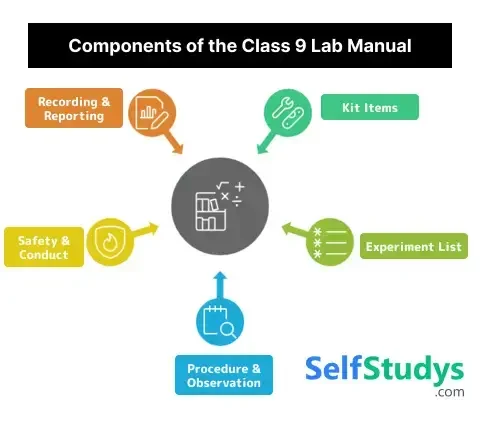
-
Kit Items: You get a list of physical items that come with the Class 9 kit (if you get it offline). The NCERT lab manual Class 9 file makes you aware of those essential physical items.
-
Experiment List: The practical lab manual for Class 9 includes a list of experiments or activities for subjects such as Physics, Chemistry, Biology (Overall Science), and Maths.
-
Procedure & Observation: In the lab manual book Class 9, you also get detailed step-by-step guidance on how you should conduct each experiment and record observations.
-
Safety & Laboratory Conduct: To reduce the possibility of accidents during the experiments, a detailed guideline is mentioned in the lab manual Class 9 PDF. Those safety and laboratory procedures ensure that the experiments are done safely and correctly.
-
Recording & Reporting: The recording and reporting formats have been described in the lab manual Class 9 PDF free download to help you understand how to record the experiments' results, how to draw diagrams, and write the conclusion.
Subject-Wise CBSE Lab Manual Class 9
In CBSE, the lab manual Class 9 is introduced for the first time, so it is designed for both Science and Maths. The tools or apparatus, methods, and activities are unique for both subjects. Therefore, we provide the subject-wise PDFs, which are further organised in a chapter-wise manner, as the official NCERT manual has described. Also, you can get a complete list of activities or experiments from the CBSE Class 9 syllabus.
| Sr. No. | CBSE Lab Manual Class 9 Subject-Wise |
| 1 | Maths Lab Manual Class 9 |
| 2 | Physics Lab Manual Class 9 |
| 3 | Chemistry Lab Manual Class 9 |
| 4 | Biology Lab Manual Class 9 |
NCERT Lab Manual Class 9 for Physics
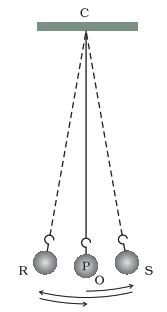
You get activities and experiments from a total of 6 topics in the Physics lab manual Class 9 2025-26, which includes Sound, Density of Solid, Archimedes' principle, Pressure, etc. There are numerous experiments you find in the manual; we have mentioned some of them here:
-
Study the third law of motion using two spring balances.
-
Verify Archimedes’ principle.
-
Plot a velocity–time (v – t) graph for an object moving with uniform acceleration.
-
Plot a distance–time (s – t) graph for a moving object.
-
Verification of the laws of reflection of sound.
Chemistry Practical Lab Manual for Class 9

With the Class 9 lab manual for Chemistry, you get a chapter-wise list of experiments and viva questions. In this subject, you have topics such as Solution, Colloids, Suspension, Mixture and Compounds, Types of Reactions & Changes, Separation of Mixture, Melting Point of Ice & Boiling Point of Water, and Chemical Reaction. You may be asked to perform the following experiments for Chemistry:
-
Study the process of evaporation.
-
Prepare a saturated solution of common salt (or sugar) in distilled water and find its solubility at room temperature.
-
Prepare a 10% (by mass) solution of common salt (or sugar) in water.
-
Separate two miscible liquids (e.g., water and acetone) by simple distillation.
-
Differentiate between a mixture and a pure compound, using iron filings and sulphur powder.
Lab Manual Book Class 9 for Biology

In Biology, you learn everything from the smallest bacteria to the largest mammals. However, the Biology syllabus is not broad, so you have very limited activities to perform, as mentioned in the CBSE lab manual Class 9. For a quick glimpse, here are some of the experiments mentioned in this subject:
-
Study of plant tissues: parenchyma and sclerenchyma
-
Study the cells of onion peels
-
Study the life cycle of a mosquito
-
Characteristics of different plants: Spirogyra, Agaricus, Moss, Fern, Pinus, and an angiosperm
-
Collect and study the diseases in locally available plants
To get a complete list of experiments for this subject, refer to the NCERT lab manual Class 9 from the link available on this page.
Lab Manual Class 9 PDF for Mathematics
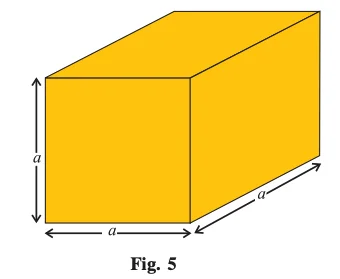
To build skills and improve mathematical awareness, certain activities are developed for students. Through the mathematical practical lab manual for Class 9, you can learn different branches of Maths like Algebra, Geometry, Mensuration, etc., by learning through real-life experiences. Before you download the PDF, look at these activity examples:
- Construct a square-root spiral using the following materials: geometry box, coloured threads, drawing pins, nails, sketch pens, marker, a piece of plywood, and adhesive.
- Represent some irrational numbers on the number line using these physical materials: Two cuboidal wooden strips, nails, a hammer, thread, a screw with a nut, two photocopies of a scale, glue, and a cutter.
There are about 48 activities to perform for which step-wise methods are mentioned in the lab manual book Class 9.
How to Get the Lab Manual Class 9 PDF Free Download?
Get the lab manual Class 9 PDF by following these steps:
- Visit our official website “selfstudys.com.”

- Go to the menu or navigation links and click on “CBSE”, then “Lab Manual.”
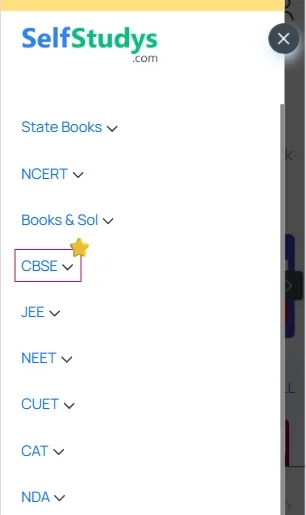
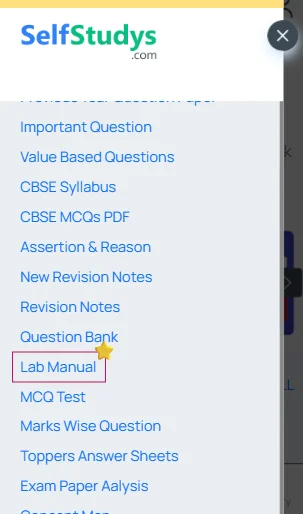
- Clicking on the “Lab Manual” link opens a new page where you are required to select your Class: 9th.

- Now, you can see a list of subjects followed by their chapter name. To access the lab manual Class 9 PDF free download, click on a chapter.

- Another page opens containing a direct link to the lab manual Class 9 for that particular subject and chapter.
List of Lab Manual Class 9 Items
For Class 9 Science and Maths experiments or activities, different materials are required. Some materials come with the physical lab manual you buy from the store. Regardless of whether you buy the lab manual Class 9 2025-26 offline, you must have a detailed understanding of the tools and materials required to perform the activities. In this section, we have shared a list of kit items you will find helpful.
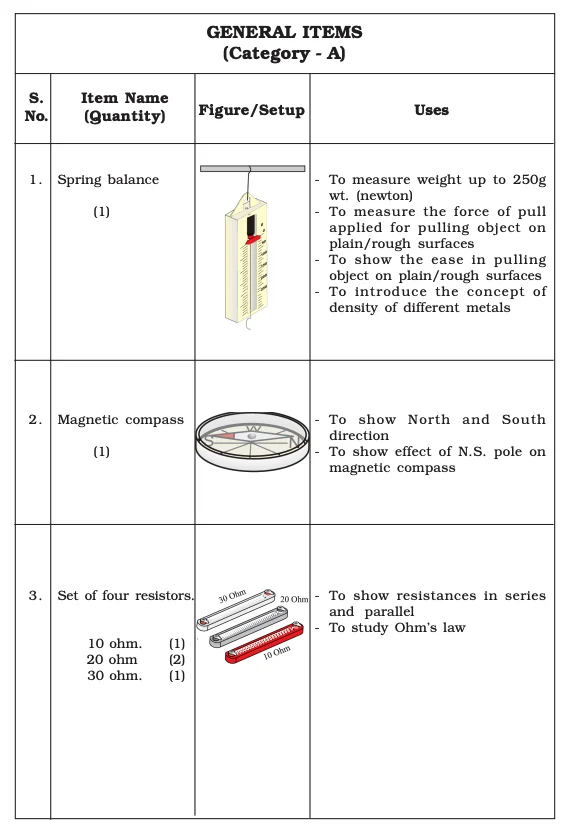
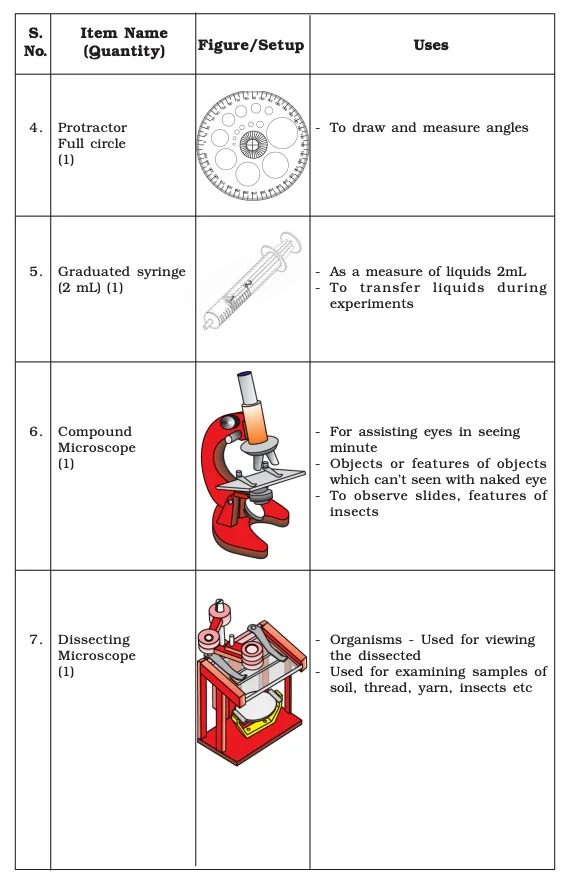
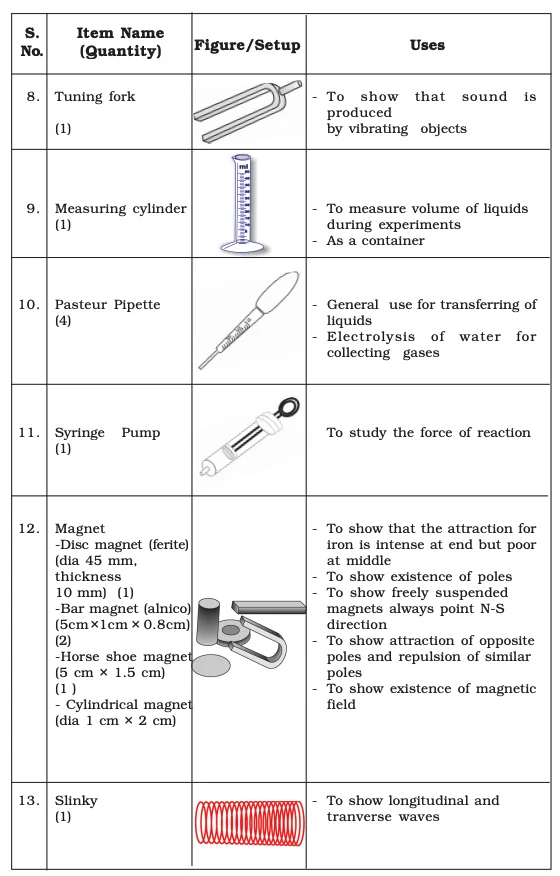
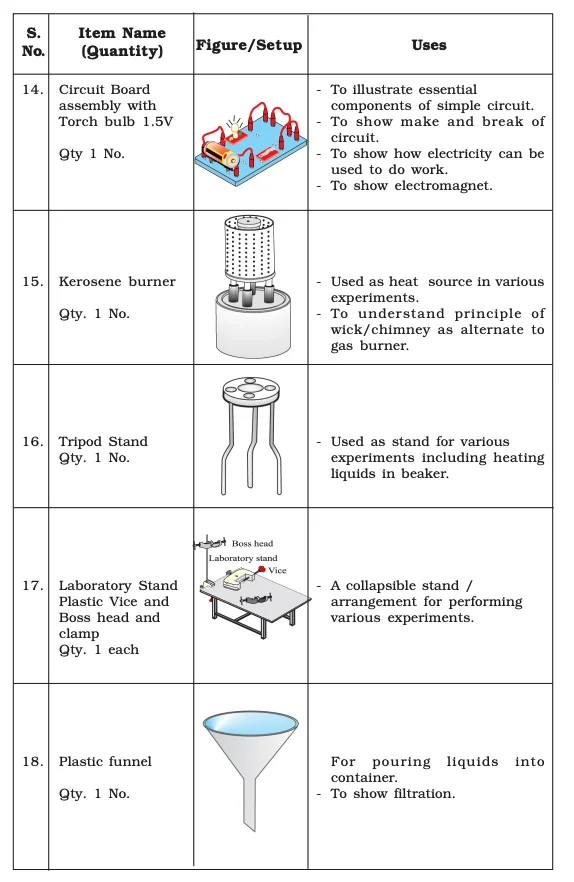
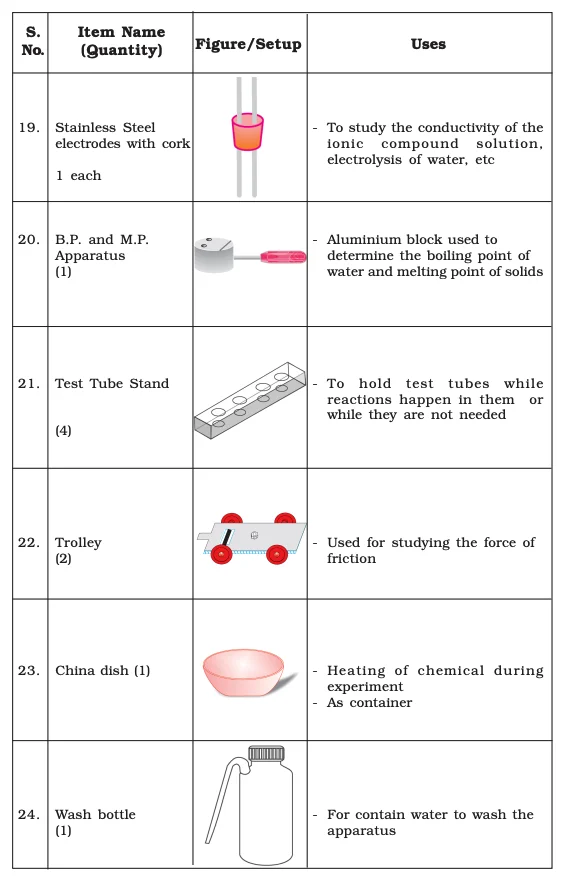

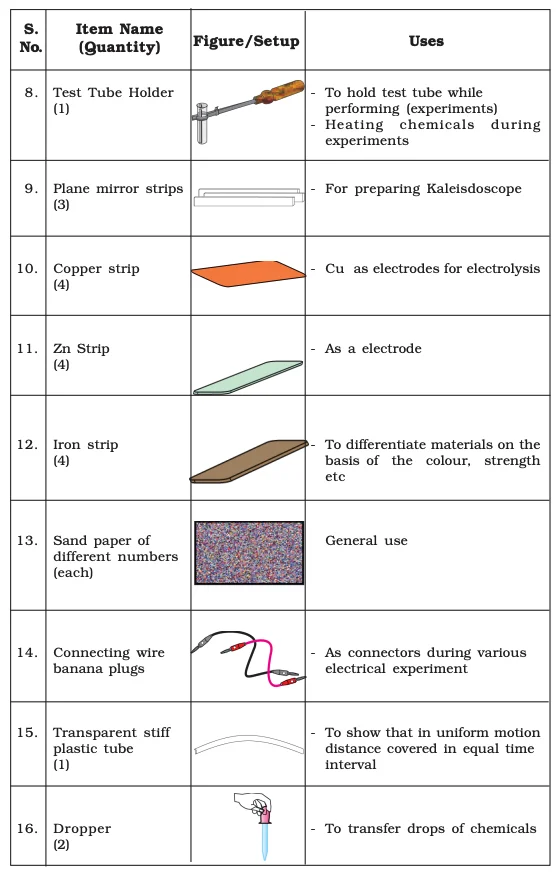
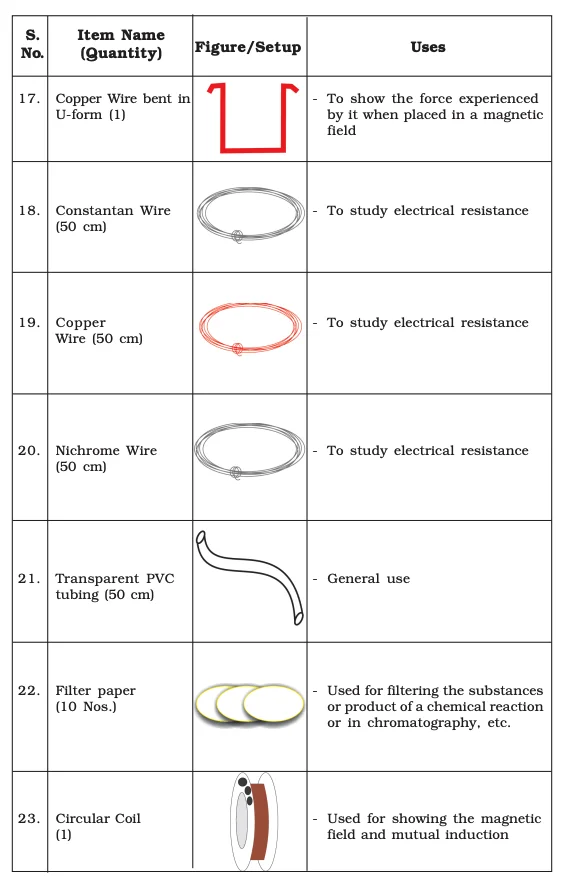

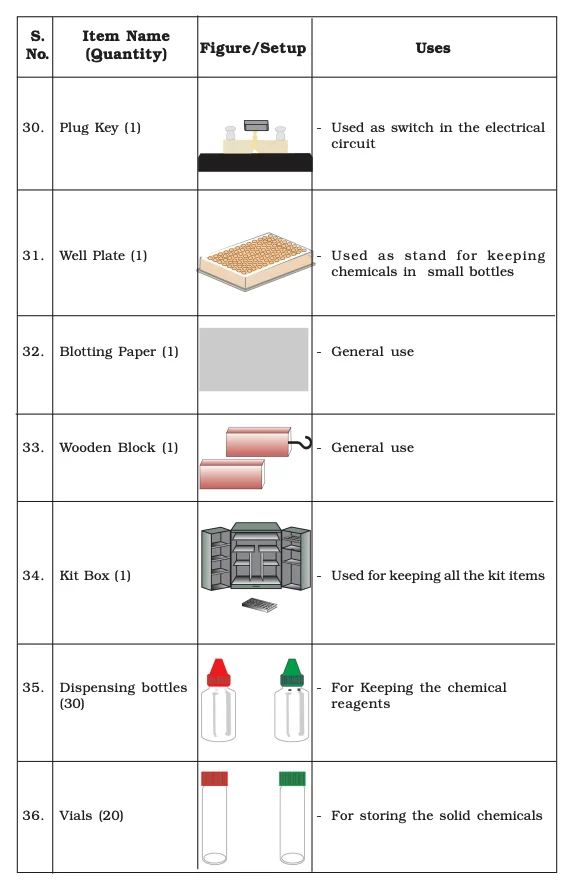
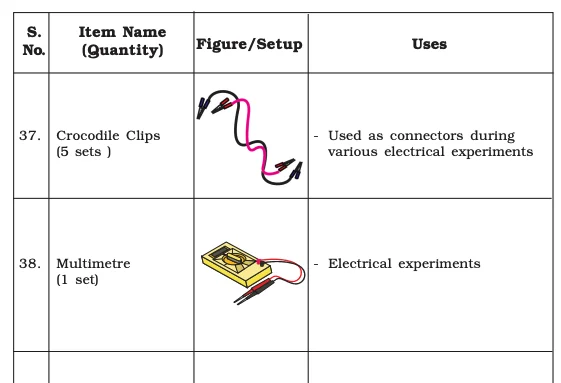
The above-mentioned items are just the basic level materials required. For a detailed list, you can check out this Class 9 Science Lab Manual Kit PDF.
How to Use the Lab Manual Class 9 2025-26?
The Class 9 lab manual is one of the best tools to learn Science and Maths through hands-on learning activities. To use it correctly, follow these steps:
-
Start with reading the Aim of the experiment because it will help you understand the purpose of the experiment and give you a clear understanding of what you will learn or prove.
-
Before you begin the experiment, ensure you read the Theory section to learn the scientific reason behind the activity.
-
Make sure you have a complete list of materials required so that you can perform the activity without taking a break. To understand what materials you will need, refer to the CBSE lab manual Class 9 to gather all the necessary details.
-
The most important point to keep in mind when using the NCERT lab manual Class 9 is not to skip any step. Ensure you check each step of the procedure and follow it in the given order.
-
Keep your eyes open and observe the experiment carefully. Watch every single change that happens during the experiment and note down the readings, such as colours, shapes, or reactions.
-
The practical lab manual for Class 9 has an observation table; use it to record your data, such as numbers, measurements, and observations.
-
At the end of the experiment, explain the result in one or two simple lines as a conclusion.
-
To avoid making mistakes and to follow the safety rules, ensure you read the Precautions section, which is mentioned in the lab manual book Class 9.
-
For the practical exam, you can use the CBSE lab manual to practice viva questions.
-
Before giving the practical exams, make sure you revise aims, diagrams, results, and precautions using the lab manual Class 9 PDF free download.
CBSE Class 9 Marking Scheme for Internal Assessment
The annual exam of CBSE Class 9 Science is for 80 marks (theory) and 20 marks (internal assessment). Internal assessment happens throughout the year, and the weightage of the practical section is 5 marks, which is important to score full marks. You can learn about the experiments and oral questions using the lab manual Class 9. However, the table below contains a detailed breakdown of the CBSE Class 9 internal assessment marking scheme.
|
CBSE Class 9 Marking Scheme for Internal Assessment |
|
|
Periodic Assessment |
05 marks + 05 marks |
|
Practical Work |
05 marks |
|
Portfolio |
05 marks |
|
Total |
20 marks |
Conclusion
For practical work and viva questions, the lab manual Class 9 2025-26 has been playing an important role for years. It is an official study material that NCERT prepares, adhering to the CBSE guidelines. From a list of experiments to the materials required, it has everything you need to conduct the mentioned experiment successfully. In addition, the practical marks are also part of the internal assessment score, so it is crucial to get full marks in them.







 Profile
Profile Signout
Signout









 Quiz
Quiz
 Get latest Exam Updates
Get latest Exam Updates 










